Head of the Class 8? With Its Semi, Tesla Promises a Trucking Alternative
Even though a next-generation Tesla Roadster unexpectedly rolled out of the back of one, it was still beyond weird to see the world’s automotive press converging on a California warehouse for the reveal of a big rig on Thursday night. But this is the scene we’ve grown accustomed to when something occurs in the Tesla universe.
The delayed reveal of the automaker’s electric semi truck, which surely has the Tesla fan base downloading C.W. McCall’s Convoy on Spotify this morning, is a proposition to trucking companies. Buy this Class 8 transport and save.
U.S. Midsize Pickup Truck Market Share Going Nowhere Fast
As global markets greet new players such as the Mercedes-Benz X-Class and as the North American market prepares to welcome back (later rather than sooner) the Ford Ranger, midsize pickup trucks are no longer making any headway in the United States of America.
In fact, October 2017 sales of five midsize pickup trucks (Tacoma, Colorado, Frontier, Ridgeline, Canyon) declined 4 percent. Given the rapid growth rate of full-size pickup trucks — six nameplates jumped 10 percent in October, year-over-year — it’s not surprising to see midsize truck market share fall. Through the first ten months of 2017, midsize trucks own 16 percent of America’s pickup truck market, down from 17 percent in 2016.
And in October, the midsize category’s share of America’s truck market slid to 15 percent. Is this what Ranger, Raider, Equator, Dakota, and B-Series dreams are made of?
General Motors to Build Two Bolt-based Crossovers, Considers the Data-mining Business
General Motors CEO Mary Barra outlined the company’s vision of the future at the Barclays Global Automotive Conference in New York on Wednesday. While the majority of her speech adhered to GM’s current mantra of “zero crashes, zero emissions, and zero congestion,” we also got a taste of what that thinking might yield on a shorter timeline.
In early October, GM expressed its intention to launch 20 new electric vehicles by 2023. However, we didn’t get any specific details on the matter. That changed this week. Barra claims the manufacturer will introduce three new electric models by 2020, with two of them being crossovers. The trio will share share basic components with the Chevrolet Bolt.
Hyundai Lays Out Its Crossover Plan; Eight CUVs on the Way
After being caught off guard by the American public’s thirst for high-riding, commodious, all-weather vehicles, Hyundai’s planning to make up for lost time.
As part of an effort we’ve known about for a year, Hyundai laid its “build more crossovers” strategy bare on Wednesday. Including the subcompact 2018 Kona, which lands on U.S. shores early next year, the automaker will “debut” eight new or redesigned CUVs over the next two years. Unfortunately, details are threadbare.
Going from Hyundai’s product timeline, the future lineup includes (among others) a new A-segment crossover, a diesel model, and an electric. Already burned, Hyundai’s now covering its bases.
Interested in More Power? Mazda Drops a Turbo Into a Troubled Sedan
Underpowered. Not as refined as the competition. Fantastic looks. Excellent handling. It’s hard to find a review of the Mazda 6 midsize sedan that doesn’t include at least two of these observations.
For 2018, Mazda’s hoping the first criticism goes the way of disco (or of the midsize sedan segment). Ahead of its November 29th debut at the L.A. Auto Show, the zoom-zoom brand is letting everyone know that buyers enamored with the 6’s flowing lines needn’t suffer from mediocre grunt. Mazda’s blowing the 6’s 2.5-liter four-banger for the upcoming model year.
Germany Loves a Good Probe: VW Raided by Prosecutors Over Labor Chief's Salary
Curious as to whether Volkswagen’s management agreed to “excessive” payments of its chief labor representative, German prosecutors raided the carmaker’s headquarters. While a raid certainly sounds bad, it seems like the only way the country’s government bothers to acquire information from automotive manufacturers anymore.
This year alone, VW has been subjected to numerous raids relating to its diesel emission scandal and possible pricing collusion between BMW and Daimler. While one imagines a swarm of suits, backed by uniformed officers, as employees frantically shred documents, the frequency of such impromptu investigations probably just leaves staffers annoyed. I’m starting to think the German government likes showing up unannounced more than the country’s car builders enjoy illicit activities.
Three-row Subie: 2019 Ascent to Debut at L.A. Auto Show
Subaru has talked about re-adding a large-ish machine to its lineup for the better part of a year, starting with a concept at this year’s NYIAS and culminating in a Twitter tweet announcing the model’s debut in L.A. on November 28th.
The name “Ascent” is apropos, accurately describing Subaru’s sales fortunes here in America. Having recorded a half-percent increase in year-over-year sales in October, Subaru can lay claim to 71 consecutive months of yearly month-over-month growth.
Place Your Bets: Toyota, Mazda Narrow Factory Site to Two States
Alabama and North Carolina are the final states left in the running for Toyota and Mazda’s $1.6 billion collaborative production venture. Tennessee, Texas and South Carolina are now out of the running but, as you know, there can only be one.
Which state is the smart money on? Your guess is as good as ours, but Toyota does already have an engine manufacturing plant in Huntsville, Alabama. It might make sense to keep things centrally located, especially if it NAFTA falls through and Toyota has to shift Corolla production back to Mexico and bring the Tacoma into the states. Of course, if that doesn’t happen, a factory closer to West Virginia and the little 2ZR-FE DOHC might be preferable.
Turkey Is Making a Weird Amount of Progress on the Saab 9-3 Becoming Its 'National Car'
Apparently, Turkey’s electric is still in the works. In case you don’t remember, the former hub of the Ottoman Empire purchased the Saab 9-3’s license from National Electric Vehicle Sweden while it was still attempting to convert the model into a marketable EV in 2015. But, despite being the absolute perfect project to give up on, nobody has.
The plan was to make the electric 9-3 “the national car of Turkey.” That’s a little weird considering the model ended its life as an American-owned Swedish car, using General Motor’s Epsilon platform, that was later sold to Dutch automobile manufacturer Spyker and eventually NEVS back in Sweden. But, considering Turkey’s national sport is semi-erotic oil wrestling, this might be another case of the Republic embarking on something my Western mind can’t fully appreciate.
Cadillac Expands Its Subscription Service to New Markets
Since its launch in the Big Apple earlier this year, the BOOK by Cadillac car-subscription service has allowed customers in New York City to get behind the wheel of a Cadillac without signing the note on one of The General’s top-flight vehicles.
The project has proven to be enough of a success that Cadillac is now launching the product in two additional markets: Dallas and L.A.
The Model 3 Is the Tesla Faithful's Personal Bodhi Tree
Patience, as we’ve been told, is a virtue. Therefore, the most virtuous individuals occupying the ball of mud we call Earth must be the Tesla faithful currently awaiting their pre-ordered Model 3 sedans. The speed of the vehicle’s launch has been sedate, to say the least. Tesla Motors finds itself plagued by production bottlenecks, which hasn’t helped the already long wait times facing those who dropped a sizable wad of bills just for the privilege of eventually owning its latest model.
However, the lengthy intermission between launch and ownership doesn’t appear to be diminishing their love for the company — a testament to the brand’s difficult-to-tarnish image. Fans of the automaker seem content to wait it out in tranquility like Siddhartha Gautama under the tree of enlightenment.
Midsize Sedan Deathwatch #17: Trouble In October 2017, Unless Your Name's Honda Accord
U.S. sales of midsize cars plunged 16 percent to fewer than 130,000 units in October 2017, the lowest-volume month for the midsize sedan category since the winter doldrums of January.
For almost every player, from the forgotten Mazda 6 to the recently revamped Hyundai Sonata to the all-new Toyota Camry, there were fewer U.S. buyers in October 2017 than in October 2016. In most cases, far fewer. Hyundai Sonata volume plunged 49 percent, year-over-year, as Hyundai pulls away from daily rentals, clarifying just how little retail demand the Sonata truly musters. Double-digit percentage drops were also reported by the Kia Optima, Subaru Legacy, Volkswagen Passat, and Mazda 6.
But the sharp October tumble wasn’t reserved for each member of the midsize category. Newly launched this fall, U.S. sales of the 10th-generation 2018 Honda Accord predictably improved in October, driving Honda’s share of the segment up four points to 21 percent.
It’s a familiar story.
Toyota's Truck Production Plans Largely Dependent on NAFTA Existing
Despite President Trump giving Toyota significant praise for its continued investment in the United States last week, the success of the automaker’s production plans hinge on the continuation of NAFTA — something the Commander in Chief has been vehemently opposed to since his well-before his inauguration.
Toyota and Mazda’s $1.6 billion factory is anticipated to yield 150,000 Corollas annually and free-up assembly facilities in Mexico that would build the Tacoma pickup. However, if the North American Free Trade Agreement is dissolved, anything produced south-of-the-boarder could be subjected to the chicken tax. Were that to happen, Toyota would be placed into quite a predicament and faced with high import taxes on any trucks it had hoped to ship to the U.S.
Seriously, How Much More Abuse Can Faraday Future Take?
It’s been a while since we’ve discussed the ongoing plight of Faraday Future. While most of this year — and all of the last — was riddled with missteps from the automotive startup, we’ve taken a break from reporting on it. That wasn’t because its situation had improved, however. Oh boy, is that ever not the case.
Earlier this month, details emerged that the business was preparing to file for bankruptcy, followed immediately by the firm denying the validity of those claims. Then, news broke that Faraday’s chief financial officer, Stefan Krause, had quietly resigned in October — despite having been hired specifically to solve the company’s financial troubles back in March.
This got us wondering as to exactly how much more can go wrong before Faraday Future finally throws in the towel.
Ford's Hackett: 'Dumb Cars' Will Be a Thing of the Past
“Ford’s future is not about giving up the car,” Jim Hackett, Ford chief executive officer, exclaimed at the Michigan CEO Summit in Detroit on Thursday. But he promises there will be “no dumb cars in the future.”
The executive was not assuring attendees that Ford has no plans to revive the Mustang II, rather, he was talking about the brand’s continued efforts to press onward into the development of electric, connected, and self-driving automobiles on a global scale. With Wall Street still fixated on tech, it would be surprising to hear any automotive executive say otherwise.
Dueling Houses: EV Tax Credit Stays Put in Senate Tax Bill
There’s renewed hope among electric car aficionados this morning. That’s because a tax plan unveiled by the U.S. Senate Thursday keeps the cherished (among some circles, anyway) EV tax credit alive, according to details released last night.
Should this part of the Senate’s tax reform proposal make it through to law, EV buyers could continue erasing $7,500 from the window sticker of their gas-free car.
With the EV Tax Credit Threatened, Where Do Green Car Sales Stand Today?
General Motors doesn’t want it gone, highly indebted Tesla certainly doesn’t want it gone, but House and Senate Republicans would love to see the $7,500 EV tax credit die a quick death. In a sweeping tax proposal introduced last week, the credit’s nowhere to be seen.
The problem, according to many green car and auto industry proponents, is that the U.S. EV market would quickly join the tax credit in going belly-up. There’s a movement afoot to save the incentive (and the fledgling market along with it).
Assuming the credit goes the way of disco (and state-level incentives aside), electric cars would be forced to stand on their own environmental merit. It’s something free-market capitalists would love to see, but would it really spell doom for the segment? That depends on who you ask. But it might be helpful to take a look at where the segment stands right now.
Ferdinand Pich Peels Away From the Family Business
After an extended battle with his family, Ferdinand Piëch has finally acquiesced to resign from the board of Porsche Automobil Holding SE and sell off his remaining shares. At 80 years of age, leaving VW Group’s parent company was probably long overdue for Piëch, but you can’t help but wonder if the manner in which his retirement unfolded hasn’t left him bitter.
Still, with his 14.7 percent stake rumored to be worth over a billion euros, he’ll have the means to stage the most elaborate revenge any of us could possibly imagine — assuming that’s what he intends. One certainly could make the case that he’d have valid reasons for doing it.
Carlos Ghosn: Car Ownership Will Not Be Replaced With Mobility
Everyone in the automotive industry is talking about a grand shift toward mobility, resulting in a future where nobody owns cars and we all putt around in autonomous pods. Well, almost everyone. Carlos Ghosn, who currently chairs the alliance between Nissan, Renault, and Mitsubishi, thinks that’s a crock.
While there’s plenty of executives keeping quiet on the evolution of ownership, few have come forward suggest business as usual will be the new status quo. Meanwhile, swaths of industry experts are pushing the notion that rental services, ride-sharing, and firms like Uber or Lyft will eventually replace the need for dealerships and garages.
Not Carlos.
Real Fake News: Donald Trump and Where Japanese Manufacturers Choose to Build Their Cars
On Monday, President Donald Trump requested that Japanese automakers consider assembling their vehicles in the United States. “Try building your cars in the United States instead of shipping them over. That’s not too much to ask,” Trump told Japanese auto executives during this week’s visit. “Is it rude to ask?”
While the internet response was to immediately scoff at how little Trump knew about the industry (Japanese companies have been building automobiles in North America for decades), the reality was far more nuanced.
Taken in the broader context, Trump actually said, “Several Japanese automobile industry firms have been really doing a job. And we love it when you build cars — if you’re a Japanese firm, we love it — try building your cars in the United States instead of shipping them over. Is that possible to ask? That’s not rude. Is that rude? I don’t think so.”
Go Higher: Buick Appends Its Avenir Sub-brand to the LaCrosse
Being good at something doesn’t necessarily make you popular. Witness the New York Yankees of the late ‘90s, for example. The current Buick LaCrosse falls in that same unfortunate boat. Given its mission, I think it’s a great car. Sadly, that’s its problem — it’s a car, not a crossover, and the market is demanding the latter.
Buick is attempting to push a few more of the large sedans through the showroom by adding the Avenir sub-brand to the LaCrosse lineup. Will it work? Well, let’s see what one gets with the addition.
Buick Poised to Become GM's Greenest Brand - If the Public Wants It
The General Motors division, known for past land yachts like the Electra 225, Roadmaster, and Riviera, will become the automaker’s cleanest in the years to come. Whether that holds true in the United States market depends on a lot of things, including whether lobby groups succeed in saving the marked-for-extinction EV tax credit.
Duncan Aldred, vice-president of sales and marketing for GM’s Buick and GMC divisions, claims the near-luxury Buick badge will appear on the company’s future electric vehicles. However, given the shaky state of the EV market in America, new Buicks will head to greener pastures first.
Sergio Talked to the Feds About UAW Corruption Investigation
Apparently, Fiat Chrysler Automobiles CEO Sergio Marchionne had an extended chat with authorities at the U.S. Attorney’s Office in downtown Detroit one year before the $4.5 million corruption scandal involving the automaker’s training center was made public.
Marchionne and his lawyer participated in a private meeting in July 2016, discussing the alleged corruption between FCA executives and high-ranking members of the UAW with investigators. One year later, former Fiat Chrysler Vice President Alphons Iacobelli was indicted and accused of funneling kickbacks to UAW officials.
Europeans Slowly Fall Victim to Pickup Truck Fever
Don’t worry, they aren’t suffering. As shown by the rise of pickup trucks as daily drivers and family haulers in North America, Europe’s burgeoning love affair with versatile light trucks isn’t hurting the owners. It’s traditional passengers car makers who must worry.
Sales stats arriving from the Continent show a marketplace that’s increasingly different from years gone by. The increasing popularity of SUVs and crossovers in the land of diesels, manual transmissions, and small displacements is nothing new, but the exploding popularity of honest-to-God pickups is.
Automakers Trying to Stop GOP From Killing EV Tax Credit
As reported last week, House and Senate Republicans have proposed sweeping tax reforms that would, by extension, kill the EV tax credit if the bill passes into law. Automakers have already expressed their distaste on the matter, and now they’re beginning to mobilize to keep it from becoming a reality. With electric vehicles just beginning to gain traction, and numerous manufacturers banking on the platform in the years to come, losing the credit would undoubtedly harm sales.
The Electric Drive Transportation Association, a group representing automakers, suppliers, technology firms, and energy concerns, says it will collaborate with its members and their shareholders to ensure the credit persists under the proposed GOP reform. Genevieve Cullen, the association’s president, claims the group will pull out all the stops to ensure the Senate sees things their way.
See the USA in a Mahindra? Indian Automaker to Open Detroit-area Plant, Report Says [UPDATE]
For the company’s sake, hopefully Mahindra & Mahindra’s second attempt to enter the U.S. market won’t go the same way as the first.
The Indian automaker is reportedly planning a 400,000-square-foot assembly plant in the Detroit suburb of Auburn Hills, and has scheduled a press conference with government officials for November 20th. As we all know, local representatives and their higher-ups don’t like braving the cold unless there’s a promise of jobs and cameras.
A previous attempt to tap into the U.S. market went nowhere, ending in a lawsuit. If this plan comes to fruition, it would make Mahindra’s auto plant the first built in the Detroit area in decades — and would provide American consumers with some new SUV options.
Will Robot Cars Make Jaywalking Legal? Maybe, But There's a Cost
A report released this week suggests that if self-driving cars become our new normal, it may mean you can jaywalk with impunity again. As if New Yorkers, Chicagoans, and residents of other major cities don’t do so already.
The National Association of City Transportation Officials, a non-profit with represents cities on issues related to transportation, put out a report this week suggesting cities should allow pedestrians to cross streets anywhere, instead of just crosswalks. The report also says self-driving cars would usually be limited to 20 mph and would be able to use pedestrian-detection technology to slow down or stop in order to avoid hitting folks crossing the road.
Say Goodbye to EV Tax Credits Under New GOP Tax Plan
It’s the last thing Elon Musk wants to hear and it’s likely not something General Motors will be too pleased about. Contained within the tax plan introduced by House Republicans Thursday is the elimination of a huge driver for electric vehicle sales — the $7,500 EV tax credit.
Automakers, and especially the two mentioned above, already stood to lose their credits in the near future (there’s a 200,000-vehicle-per-manufacturer cap), but the new tax bill would see the buyer incentive permanently removed, not renewed, as many had hoped. Such a move could slam the brakes on a still-fledgling segment in the U.S.
Let's Go All the Way: Chevrolet Bolt Increases Its Lead Over Faltering Volt
Never mind competing with EVs from other manufacturers. With each passing month, it becomes ever clearer that the all-electric Chevrolet Bolt competes directly with another General Motors stablemate: the Chevrolet Volt.
In October 2017, the Bolt — first sold last December and available nationwide since mid-summer — pushed into second place out of all plug-in vehicles sold in the United States, muscling out the Tesla Model X in the process. In doing so, it increased the sales gap between it and the range-extended Volt.
When buyers hit up a “dinosaur” legacy automaker for a green car, it seems they prefer going all the way — once-revolutionary gas generator be damned.
U.S. Auto Sales Brand-by-Brand Results: October 2017 YTD
It was only a mere blip, the year-over-year increase reported by the U.S. auto industry in September 2017. After eight consecutive months of decline, auto sales grew in September. But October’s results once again manifested a gradual and marginal decline.
U.S. auto sales slid roughly 1 percent in October 2017 thanks in large part to sharp decreases at Fiat Chrysler Automobiles’ Dodge brand and a 15-percent Hyundai drop. Chrysler, Fiat, Jaguar, and Maserati were the only other brands to report double-digit percentage losses.
Tesla Shares Slip as Elon Musk's Reassurances Fall Flat
It’s now Tesla that’s been disrupted.
For all of the Silicon Valley speak about “disrupting” the automotive industry, and despite some very interesting successes in doing just that, Tesla is still struggling to actually get cars to market.
That’s understandable to an extent – the company is small, with limited experience. But CEO Elon Musk has talked a big game, and thus far not delivered on his promises.
Wall Street, predictably, has noticed.
Tesla Production Troubles May Be Continuing Due to Design Changes, Hiring Issues [UPDATED]
Tesla’s Model 3 production problems are well documented, including the recent firings/layoffs. Now we’re hearing that while Tesla has conceded it has production “ bottlenecks” (and blamed some of the issues on suppliers failing to meet their deadlines), the company may also be shooting itself in the foot with mismanagement.
A TTAC reader with insider knowledge claims a design change to an aluminum frame component has idled production for nearly two weeks. In addition, an Indeed.com job posting from about 45 days ago sought temporary contract workers to program the robots on the assembly line.
That last bit is notable, as typically the hiring for that job would have wrapped up much sooner in advance of the production launch.
QOTD: Fly or Flop? New Wagons Brave Rough North American Shores
Two new models are entering the not hot wagon market in North America. While one wagon entry is aimed squarely at the near-luxury market, the other aims higher and challenges established luxury wagons.
Our question today is this: Will either of the models work?
Mitsubishi Rebrands, but Will It Work?
As I scanned my social media feeds last week, I noticed a fair amount of journalists posting that they were headed to the Tokyo Motor Show on Mitsubishi’s dime. While automaker-funded junkets to an international auto show aren’t uncommon – I’ve been on such trips myself – the fact that it was Mitsubishi footing the bill for international airfare and hotels in one of the world’s most expensive cities raised my eyebrows.
Don’t worry, this isn’t a screed about journalistic ethics and press junkets. I only mention it because automakers don’t spend that kind of money on media without a purpose. They have something in mind that they want covered, and while they won’t attempt to dictate that the journalists report only glowingly about what they’re doing (at least I hope not), they will expect coverage, even if it’s neutral or negative, from those they flew out there. All publicity being good publicity, that sort of thing.
The New Thriftpower? EPA Says Less-thirsty 2018 Ford Expedition Tops Its Class
There’s nothing quite as uncertain as that little number staring at you from the window sticker of a new vehicle. It’s two digits long (unless you’re fabulously rich), followed by the word “combined.” We’re talking, of course, about the Environmental Protection Agency’s fuel economy rating, which often turns out to be an impossible-to-reach goal or — if you’re lucky — a lowballed figure.
Back in the days of lapels and flares, the hot gas mileage action was found in the compact and subcompact class. Economy cars, after all. Well, people these days prefer driving a vehicle that seats at least five adults in comfort while towing a boat and hauling 65 pounds of kid’s toys and a dog in the rear cargo area. With the heyday of the cheap little car long gone, the (fuel) economy battle rages anew among the largest, and most lucrative, vehicles on the road.
So, do you believe the EPA when it says the massive 2018 Ford Expedition gets 20 miles per gallon combined?
Why Are Japanese Cars Starting to Look Different All of the Sudden?
While it’s impossible to imagine you haven’t already noticed, Japanese automakers are entering a new era of style. Disparate from each other and unabashedly novel, vehicles are beginning to crop up at trade shows and on the road that we couldn’t have seen coming a few years earlier.
Right now, the most obvious examples are from Toyota and Honda. But even Mazda, Subaru, and Mitsubishi have recently made a concerted effort to step up their styling game. The reason, according to manufacturers, is new competition.
It wasn’t all that long ago that Japan could offer a fairly dull automobile and bank on its superior quality and value to get prospective buyers to take it home. Things are different now. The quality gap is beginning to close and other manufacturers are getting better at providing most of the things that used to denote something as distinctively Japanese.
Nissan and Subaru Faulted for Decades of Improper Inspection Procedures
Japan appears to be having a problem with its quality control. Nissan Group is conducting updated inspection procedures after details emerged that it allowed uncertified employees to conduct final vehicle checks. However, the Japanese government continues to find issues with the automaker’s practices, forcing it to temporarily suspend new vehicle registrations.
Early reports from an external investigation commissioned by Nissan suggest the certification problem may have begun in 1979.
Subaru faces a similar plight. With Nissan’s inspection issue looming larger than anticipated, Subaru has admitted to following improper procedures for its domestic products. On Friday, the carmaker said final inspections at its main plant have occasionally been handled by employees not listed as certified technicians. The problem has persisted for more than 30 years, according to the manufacturer.
Two Classes of Toyota-built Sports Coupe and the $5 Difference
With the aggressively styled LC 500 garnering most of the Lexus coupe headlines, what with its eight-cylinder engine and look-over-here sheetmetal, its RC stablemate often gets short shrift. Meanwhile, the more attainable Toyota 86 (formerly the Scion FR-S) seems to make headlines for not offering extra horsepower than for anything else.
America is not a forgiving place for coupes these days.
Still, which of these rear-drive Toyota-built coupes holds the most appeal to a buyer? The 86’s handling and youthful intentions aside, it’s arguably the RC, as Lexus’s coupe offers more interior room, horsepower, and clout. Even the base RC 200t, which becomes the RC 300 for 2018, brings a 241-horsepower turbocharged 2.0-liter to the table, handily besting the 86’s turboless 2.0.
Of course, it’s not really a fair comparison. The price gulf between the two models is quite significant. Or is it?
Boastful Toyota Exec Feels Little Sympathy For Foolish Rivals
If only other automakers were as sensible and wise as Toyota. If those companies held Toyota’s Magic 8 Ball, conjuring up all the right answers in the little purple window, they wouldn’t be so hasty to embark on risky ventures.
That’s the view of Toyota’s executive vice president, who’s apparently feeling pretty pleased with himself and his company. Didier Leroy broke from the automaker’s staid, stay-the-course-and-don’t-ruffle-feathers attitude at the Tokyo Motor Show this week, describing his rivals’ faults at a dinner held on the show’s sidelines.
Plunge headlong into electric vehicles? Sure, make wild long-term promises to customers, Leroy said. Toyota doesn’t do that. It just hands you a real car when it’s ready. Oh, and those diesels everyone’s worried about? Toyota fell out of love with them long before the word “dieselgate” left anyone’s lips.
Toyota’s feeling its oats.
Survey Shows Sexism Is Still Alive in the Auto Industry
Automotive News has published the results of a survey it commissioned this spring concerning sexism experienced by women working in the automotive industry.
It’s a coincidence, of course, but it’s interesting timing in the wake of the sexual harassment conversation taking place in the wake of the Harvey Weinstein allegations. One refrain I’ve seen banded about is something like “this doesn’t just happen with powerful people in Hollywood, but in every industry.”
This survey would appear to indicate that the automotive industry is not immune, and personal observational experience from my time in the industry — especially my time in the dealer world — backs that up.
Automakers Unify to Urge Trump to Keep NAFTA
Domestic automakers and suppliers have already expressed concerns that leaving the North American Free Trade Agreement could be detrimental to the industry. Numerous automotive trade groups have claimed that losing NAFTA would result in less efficient and more costly ways of doing business.
Hoping to steer Donald Trump away from the idea of abandoning the three-country accord, manufacturers, parts suppliers, and dealers have come together to form the “Driving American Jobs” coalition. The group’s primary goal is to prove that NAFTA has been beneficial to the participating countries, especially the United States. It also makes the claim that withdrawing from NAFTA would re-establish trade barriers, hurt the U.S. economy and cost jobs.
“We need you to tell your elected officials that you don’t change the game in the middle of a comeback. We’re winning with NAFTA,” urges the group’s website.
Ditching Opel and Vauxhall Hits GM in the Pocketbook; Crossovers to the Rescue!
Thanks mainly to the unloading of its longstanding European operations, General Motors reported a $3 billion net loss in the third quarter of 2017, according to an earnings report released Tuesday.
Punting responsibility of its Opel and Vauxhall subsidiaries to France’s PSA Group definitely didn’t come without a penalty, with most of the expense ($5.4 billion related to deferred tax assets and pension costs) incurred during the last quarter. Still, GM prefers the one-time earnings hit to keeping an unprofitable operation alive on the other side of the Atlantic.
While the Opel sale cut into the automaker’s balance sheet, The General also saw less earnings from car sales. Production declined in Q3 2017 compared to last year, and that meant less black ink. Still, GM doesn’t see many dark clouds. Why? One word: crossovers.
European Raids Expand to Daimler and VW in Automotive Cartel Probe
Following an earlier raid at BMW, Daimler AG and Volkswagen Group were also searched by antitrust officials from the European Union Commission and German government this week. Despite claiming whistleblower status, Daimler is still subject to investigation — though it’s less likely to incur the same financial penalties if the collusion charges go to court.
Over the summer, investigators from the EU stated there would be an investigation into several German carmakers after allegations surfaced that companies conspired to fix prices on various automotive technologies over several decades. But it wasn’t until Monday that officials searched Daimler’s corporate offices and collected documents from Volkswagen’s headquarters in Wolfsburg and at Audi’s home base in Ingolstadt.
Made for America, the Nissan Titan Expands Its Horizons
In terms of monthly U.S. sales, Nissan’s line of Titan pickups ended September in the number nine spot, ahead of the midsize GMC Canyon but behind its own paleolithic Frontier. While the 3,773 Titan and Titan XDs sold last month represent a tiny fraction of the 82,302 Ford F-Series models sold in the same time frame, it’s still a 52-percent increase from the same month in 2016.
Year-to-date, however, Titan sales are up 224 percent in the United States. That’s enough to get Nissan thinking about the pickup’s potential in markets not dominated by tried-and-true nameplates from the Detroit Three.
It seems Nissan’s planning to seize some ground for itself on fertile — but traditionally unfriendly — terrain. Looking back, the looming push was obvious.
If You're Wondering Why Automakers Can't Stop Talking About Mobility, Wonder No More
“Mobility” is easily the most overused term in today’s automotive vernacular. Despite being incredibly nonspecific, executives can’t help but make it the bookend of most speeches involving long-term goals and production stratagems. But why?
The term itself pertains more to the industry itself than the specific products it’s developing. While “mobility” can be applied to any conveyance with a technological bent, the word also represents a company’s ability to move into other areas of business. And that’s what gets the investors and market analysts tugging at their collective collar, damp across the brow, so red hot they can’t help but raise the stock valuation of any company that seems poised to make a big move.
Tesla’s entry as novel manufacturer with a unique product was enough to send its share price through the roof, and established automakers took notice. Despite Mark Fields’ best attempt to rebrand Ford as a tech company, he couldn’t bottle that same lightning and paid the ultimate price — getting fired. However, General Motors may be succeeding where Ford initially failed. The proof of the pudding is how high its share prices continue to climb.
Reality Czech: If You're Waiting for Skodas in America, Prepare to Wait Even Longer
Nothing stirs up enthusiasts and cynics quite like the potential launch of a new brand in the United States. Over the past several years, we’ve reported on the motions being made by established European players eager for a thin wedge of the country’s huge car-buying pie — players like PSA group, which is now in the early days of a decade-long return to the U.S. marketplace.
Less exciting, especially considering the level of zeal expressed for quirky French cars, is the rumored emergence of the Skoda brand on this side of the Atlantic. Once a lesser player in the Volkswagen Group fold, the Czech automaker is enjoying huge sales increases. There’s a diverse lineup of vehicles, including a seemingly made-for-America SUV, the Kodiaq. The brand even filed trademark applications for model names.
So, should we expect a go-ahead decision in the months ahead, like the brand’s leadership hinted at last year? Nope. Skoda has better things to do.
As Chrysler Fades Away on the Global Stage, Right-hand-drive 300s Remain in Production
On the surface, Fiat Chrysler Automobiles’ Jeep brand is everything a modern-day brand should be. SUVs and crossovers, a looming pickup truck, and no cars. This is what the world wants.
On the opposite side of the coin, Chrysler is the brand seemingly no one, save for North American minivan buyers and a shrinking pool of traditional luxury sedan devotees, wants. Year-to-date, sales of the brand’s two-model U.S. lineup is down nearly 10 percent.
Overseas reports claiming FCA has ended production of right-hand-drive models at its Ontario, Canada assembly plants paint an even grimmer picture, even though the core RHD Chrysler model — the rear-drive 300 — is not, apparently, extinct.
Are Two-tone Paint Jobs the Next Big Automotive Trend?
Contrasting paint hasn’t been commonplace on automobiles in over half a century, but it appears to be regaining some of its lost momentum lately. Everything from the Bugatti Chiron to the Toyota Camry offers separate bodywork hues these days.
Of course, we don’t know if this is a trend poised to explode across the industry or something that will be relegated to a handful of models before fizzling out. However, with new crossovers like the Volkswagen T-Roc, Range Rover Velar, and Volvo XC40 available with contrasting rooflines, it seems ready to enjoy at least 15 minutes of fame.
Utterly Ridiculous New Audi Nomenclature Scheme Is Not Happening in the United States
See that new Audi A3 with between 109 and 129 horsepower? That’s an Audi A3 30. And see the badge on the back of that Audi A4 2.0T? Right, it doesn’t say 2.0T. It says Audi A4 45.
Huh?
Exactly. Huh. Many huhs. “Huh?” is being heard everywhere. In fact, even within Audi, “Huh?”, was an expression heard often enough that Audi of America won’t be adopting the new model designation format. That’s a relief.
Remember when you looked at the back of a German car and could instantly decipher its engine displacement?
This Is the End: R.I.P., Australian-built Automobiles
Maybe the dingo ate your industry? No, that cruel joke doesn’t hold a grain of truth — Australia’s domestic auto industry simply fell victim to the harsh realities of economics and globalization.
No longer a captive market, no longer a country with steep walls built of tariffs, the land Down Under found it could no longer sustain its own vehicle manufacturing presence. Because of this, today marks the end of it all. Workers will leave the Holden assembly plant in Elizabeth, South Australia, closing the door on the GM subsidiary’s 69-year Aussie car-building history.
It seems the final vehicle to leave the plant was fittingly badass.
It's a Sign: TTAC Finds Official NHTSA 2018 Mazda CX-5 Diesel Filing
Mazda announced 11 months ago that the company “will introduce a diesel engine option to the North American market,” with the revamped CX-5, launched in the 2017 model year.
We’d heard such claims before. Three years ago, we were still waiting on the launch of the diesel-powered Mazda 6, at least until Mazda gave up on that idea. But Mazda’s insistence this time around produced less doubt. Mazda even revealed that the automaker felt it could generate 10 percent of CX-5 sales with the diesel model.
But last month, we began to wonder about Mazda’s claims of delivering a 2017 Mazda CX-5 Diesel in the second-half of 2017. The second-half, as you may have noticed, is quickly drawing to a close. Moreover, Mazda wouldn’t offer up any timing, saying only that, “We are working with the EPA and CARB and will have more information in the future.”
Mazda still won’t offer up any timing details. But TTAC’s resident government filing investigator, Bozi Tatarevic, came across some very interesting details at NHTSA.gov that reaffirm the forthcoming 2018 Mazda CX-5 Diesel.
To Date, There Are 13 Volvo V90 Cross Countrys in America for Every Standard Volvo V90
Through the end of September 2017, Americans have registered 13 times more Volvo V90 CCs than Volvo V90s, clarifying with purchasing habits what every auto industry observer, casual or professional, already knew.
Volvo’s surely not surprised, either. After all, if you want to acquire a low-slung Volvo V90, Volvo forces U.S. customers to actually order the car. (Perish the thought.)
Even less surprising is the frequency with which Volvo now sells wagons. Combined, the four V60 and V90 variants account for fewer than one-in-10 Volvo USA sales through the first three-quarters of 2017.
IIHS Throws Another Hurdle at Automakers: The Passenger-side Small Overlap Crash Test
First, the Insurance Institute for Highway Safety bagan irking the automotive industry by performing crash tests. Then it devised more. Eventually, the IIHS ratcheted the bar up to a previously unseen height, demanding vehicles undergo the dreaded small overlap front crash test — a 2012 addition to its testing regimen. Covering just 25 percent of the frontal area of the car, the test mimics a not-quite-glancing-enough head-on collision, or perhaps an impact with a tree or utility pole.
New vehicles failed the test in droves. Firewalls were deformed. Dummies’ legs exited the vehicles in mangled fashion. The Dodge Challenger got a black eye. In response, the industry raced to beef up its front ends, eager for a marketable high crash test score.
Now, a year after becoming concerned that automakers were focusing efforts on only the driver’s side of the vehicle, IIHS is turning its attention to the passenger side. A new crash test is born. But how did the first crop of vehicles — 13 midsize cars — fare in this new test?
America's Best-Selling SUVs and Crossovers Through 2017 Q3: Toyota RAV4 Primed to Break Honda CR-V Streak
For five consecutive years between 2012 and 2016, the Honda CR-V has been America’s most popular utility vehicle.
In fact, the CR-V has topped America’s SUV/crossover sales charts in nine of the last 10 years, a streak of dominance that began in 2007.
It appears increasingly likely in 2017, however, that the Honda CR-V’s streak will be broken by the Toyota RAV4. Thanks to 20-percent year-over-year growth through the first three-quarters of 2017, the RAV4 leads the CR-V by more than 31,000 sales and the Nissan Rogue/Rogue Sport by more than 15,000 sales with scant time remaining for the RAV4’s rivals to make up the gap.
The difference maker? Toyota’s RAV4 Hybrid.
The Lamborghini Urus SUV Will Dramatically Change What It Means to Sell a Lamborghini
The company that sells SUVs together stays together.
So it goes, or is likely to go, with Lamborghini. Keep in mind that the Volkswagen Group supercar manufacturer has already seen massive sales growth. During the half-decade before Stephan Winkelmann took over as boss at Lamborghini in 2005, the brand was selling only 800 cars on an annual basis. But by the time Winkelmann was done a decade later, Lamborghini was averaging 2,300 annual sales. In 2016, Lamborghini sold 3,457 vehicles around the world, including more than 1,000 in the United States.
Those figures will soon seem paltry because the unfortunately named Urus SUV will double the brand’s volume. But what does such a massive change do to Lamborghini’s operations?
Misadventures in Advertising: The Nissan Titan's Poor Little Ponies
Earlier this week I was presented with a little advertising to enjoy, via Facebook and courtesy of Nissan. The ad is part of a new campaign launched on October 14th. In it, Nissan throws a couple of strangers together in a predicament involving the Nissan Titan XD and a previous-generation (debadged) Ford F-150.
I’m not impressed.
Ian Callum Wants Another Jaguar XK, Seems Rather Unhappy the Jaguar XK Was Killed Off
“The XK being dropped was much to my frustration.”
– Jaguar design director Ian Callum
The Jaguar XK ended its 19-year-long run after the 2015 model year, undone by disappearing demand and the success of the smaller, more affordable Jaguar F-Type. But it wasn’t supposed to be this way, Jaguar design director Ian Callum says. The XK was supposed to roll along in third-gen form alongside the first-gen F-Type.
“The F-Type was never meant to kill the XK,” Callum tells Autocar.
In fact, despite the design work that had already begun on the next Jaguar XK — a car that never materialized — the marketing execs at Jaguar didn’t see the need for two coupes. The third-gen XK never enjoyed any engineering development.
Yet Callum’s outsized influence at Jaguar appears to be producing XK-shaped fruit in Jaguar’s product planning department. While there’ll likely be a new Jaguar F-Type first, you can begin inspecting your local Jaguar showroom for the next Jaguar XK in 2021.
13 Burning Questions We Have for Volvo's 2020 Polestar 1
By nature, we’re skeptics. It’s in the job description.
Thus, while it’s hard not to fall in love with the idea of Volvo’s new 2020 Polestar 1 offspring — I mean, just look at it — we also know how hard it is to kickstart a new luxury brand, regardless of whether Polestar wants to sit far outside the luxury mainstream or right at the heart of the matter. We can’t help but wonder whether the Polestar 1 is not representative of the ideal luxury brand launch.
As doubters, as pessimists, as cynics, as preternatural killjoys, as wary realists, we have questions about this new upstart premium automotive entity. Many questions.
Alfa Romeo Isn't Going to Meet Its 2017 Sales Targets - Blame China
Alfa Romeo is on track to sell between 130,000 and 140,000 vehicles around the globe in calendar year 2017, a far cry from the 170,000-unit performance Sergio Marchionne expected Alfa to put together.
U.S. sales remain predictably low by the standards of rival brands but are rising quickly now that the Stelvio SUV is in action. But on the other side of the Pacific, new rules that limit automobile manufacturers from forcing dealers to accept stock, Automotive News Europe reports, has sorely limited sales in China. Thus, rather than the 2,666 Alfa Romeo Stelvios shipped to China in July, only 227 landed in China in August.
The result? Alfa Romeo is cutting back production of the Stelvio and Giulia in Cassino, Italy.
This Is the New Audi A7… 's Silhouette
At 1 p.m. ET on Thursday, October 19, 2017, the second-generation Audi A7 will be unveiled. Based on the silhouette Audi has already revealed, and based on Audi’s historic design habits, the second-generation A7 will appear remarkably similar to the first-generation Audi A7.
At some point in November, Audi USA will sell its 50,000th A7, making the hatchbacked A6 a low-volume car even by the standards of America’s third-ranked German luxury brand. Yet as a style and status symbol, the A7 remains a model of great importance to the overall Audi lineup.




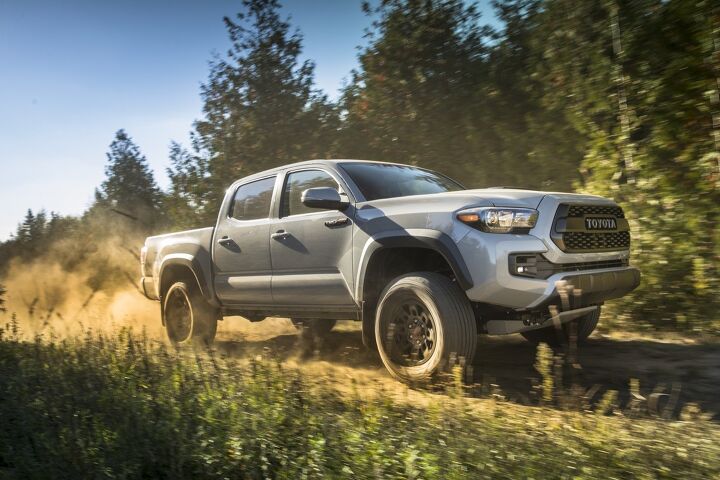
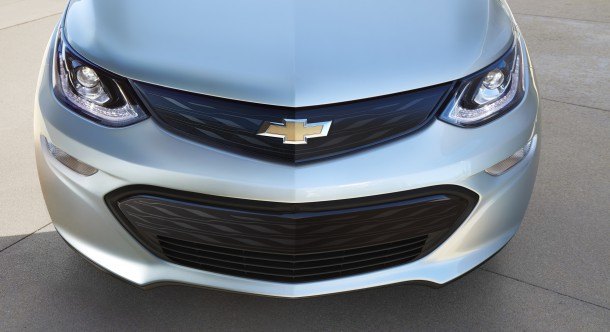


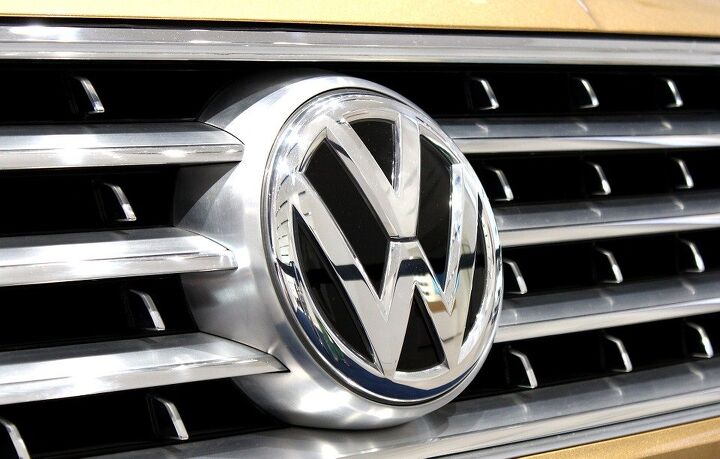




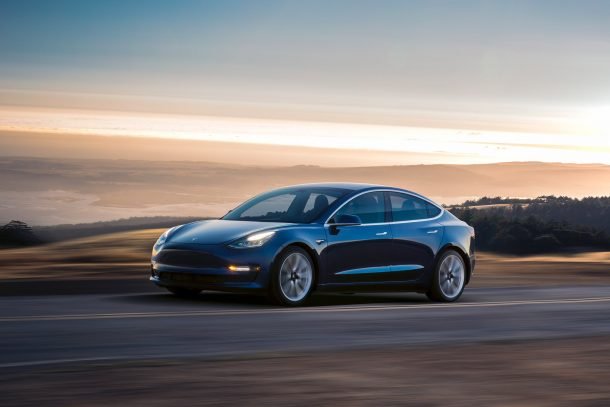




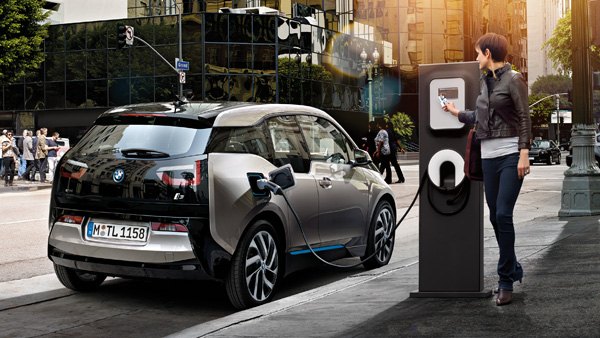







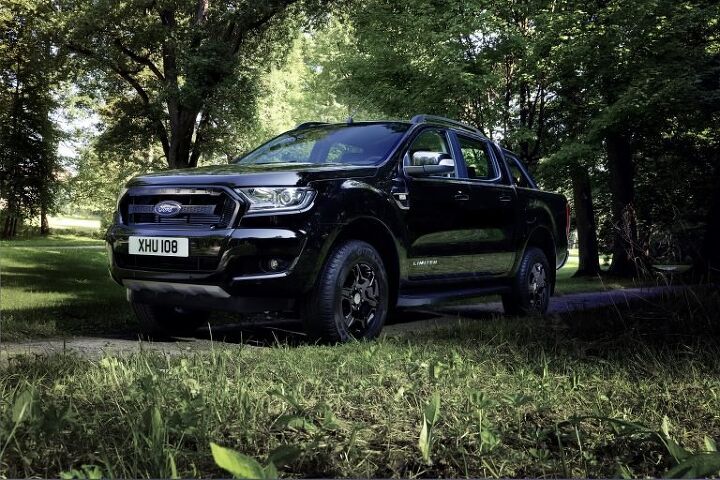
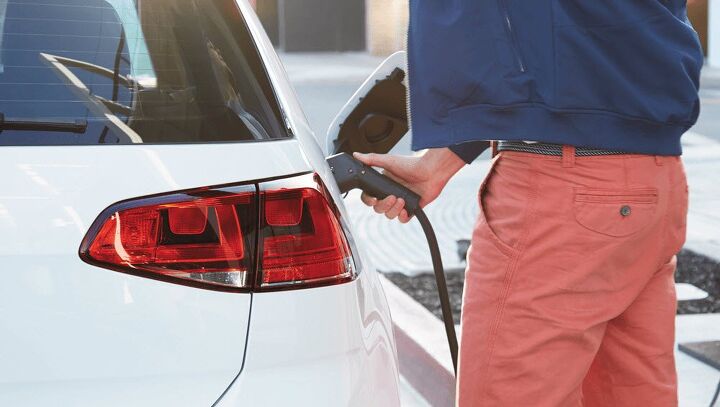
![See the USA in a Mahindra? Indian Automaker to Open Detroit-area Plant, Report Says [UPDATE]](https://cdn-fastly.thetruthaboutcars.com/media/2022/06/30/8778180/see-the-usa-in-a-mahindra-indian-automaker-to-open-detroit-area-plant-report-says.jpg?size=720x845&nocrop=1)




![Tesla Production Troubles May Be Continuing Due to Design Changes, Hiring Issues [UPDATED]](https://cdn-fastly.thetruthaboutcars.com/media/2022/07/19/9201420/teslas-feverish-production-drive-sometimes-means-partial-assembly-at-stores-report.jpg?size=720x845&nocrop=1)
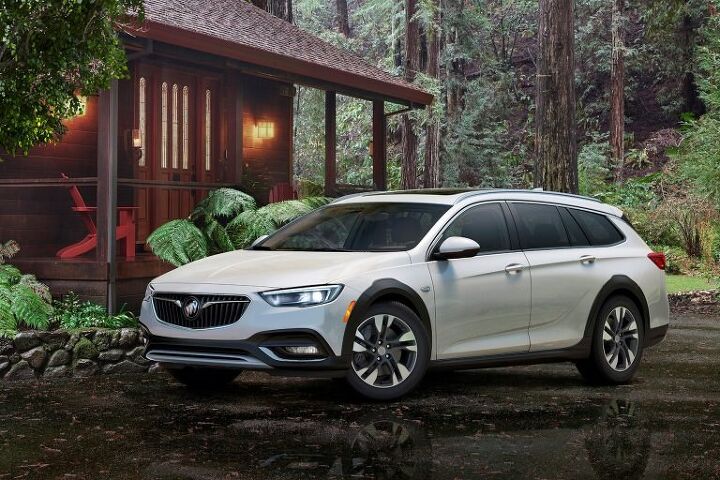
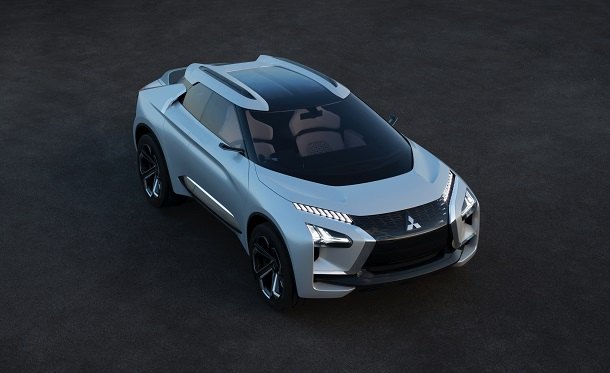
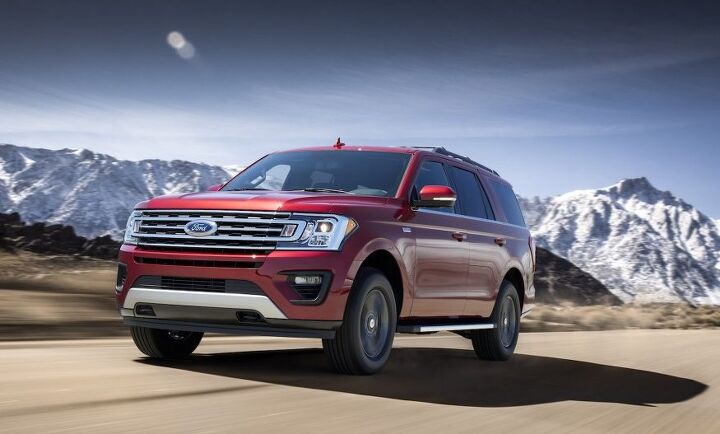

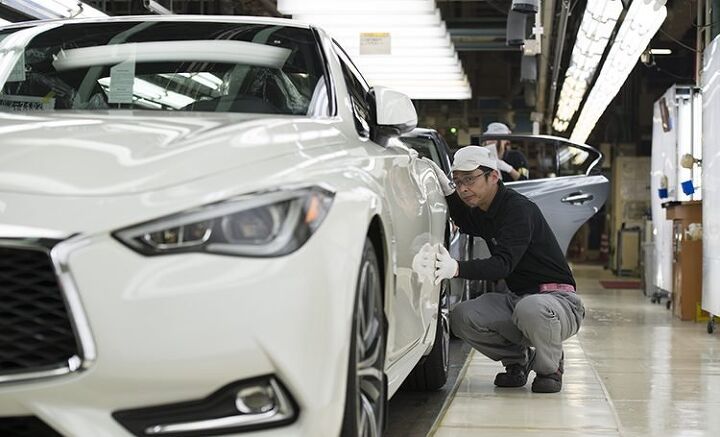





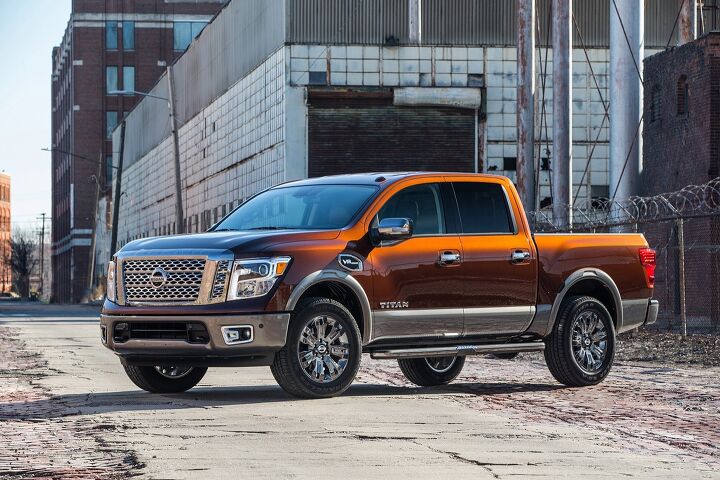




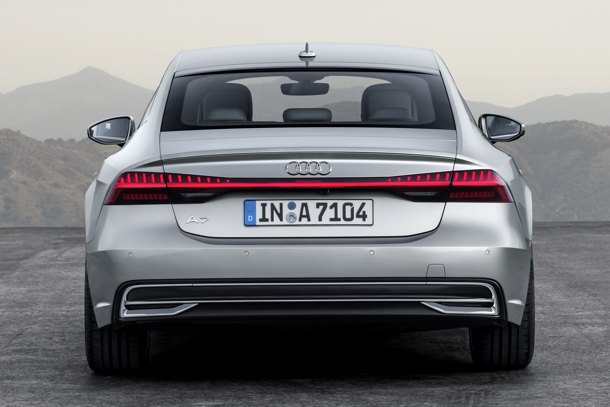



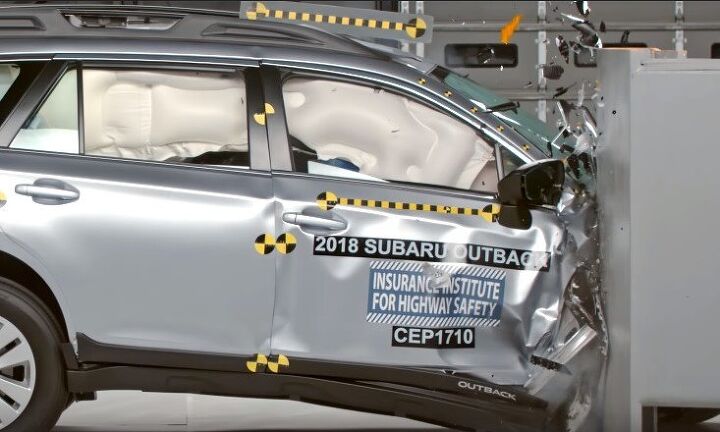



















Recent Comments